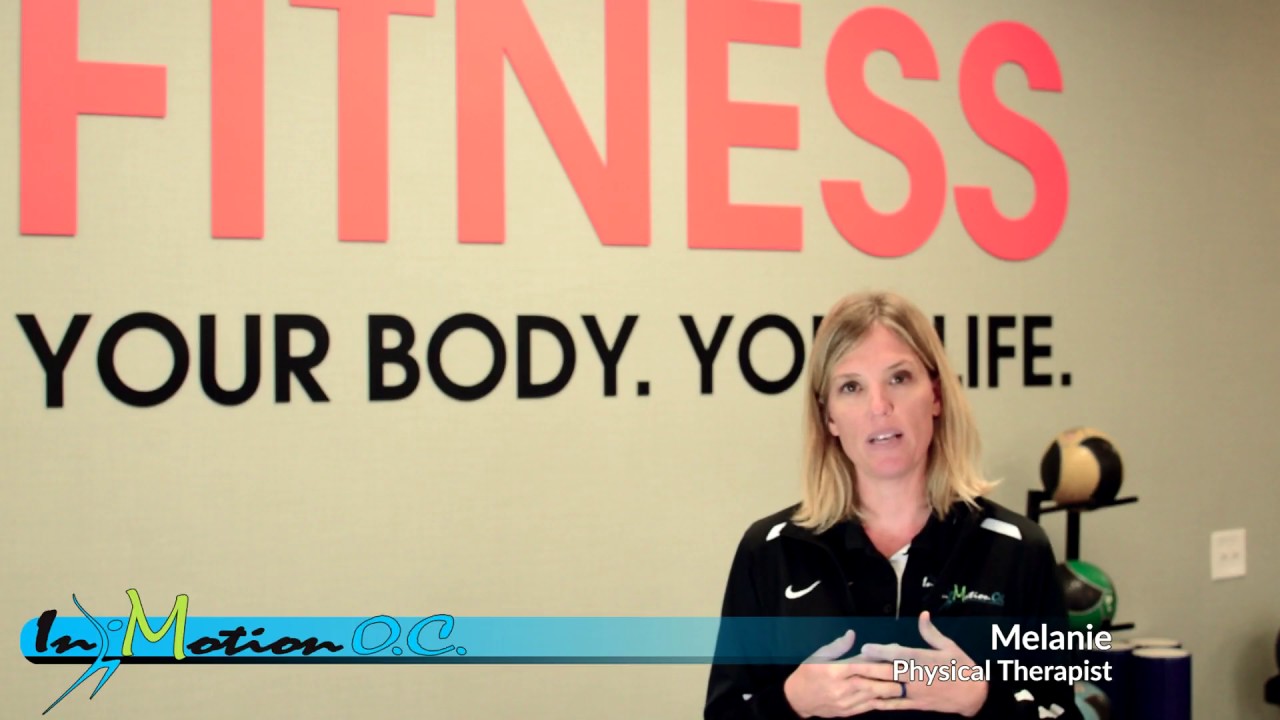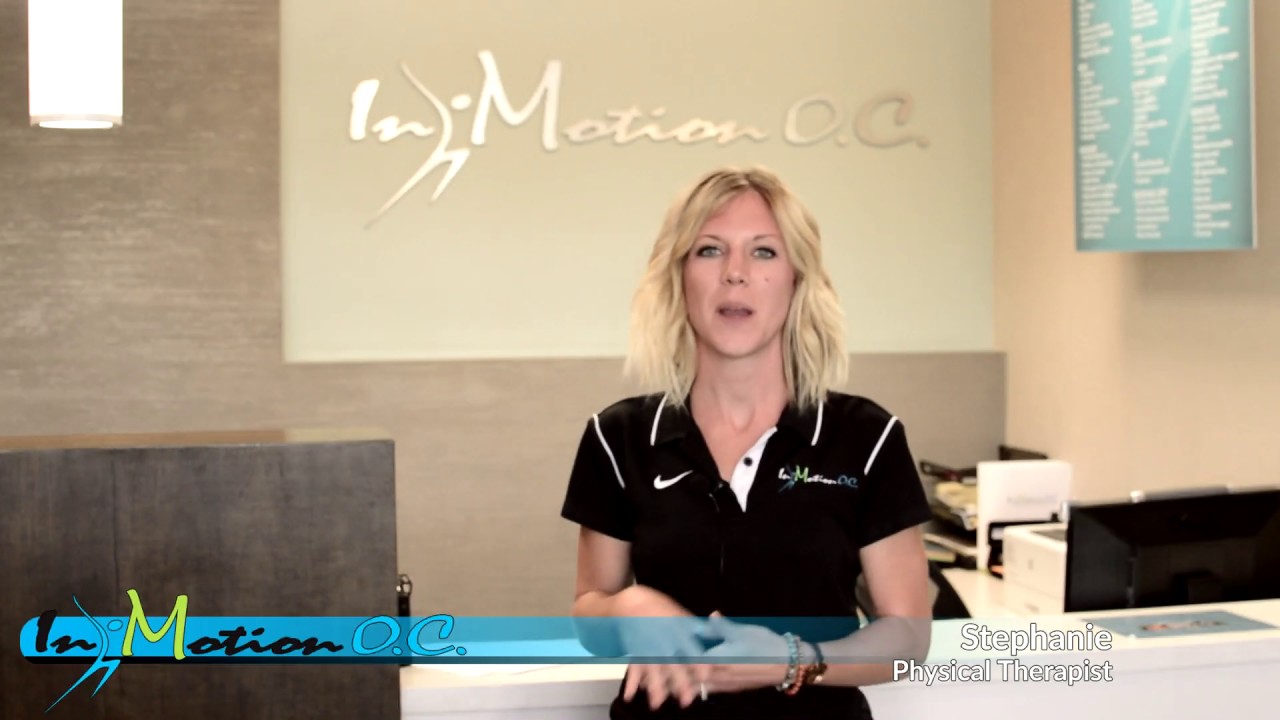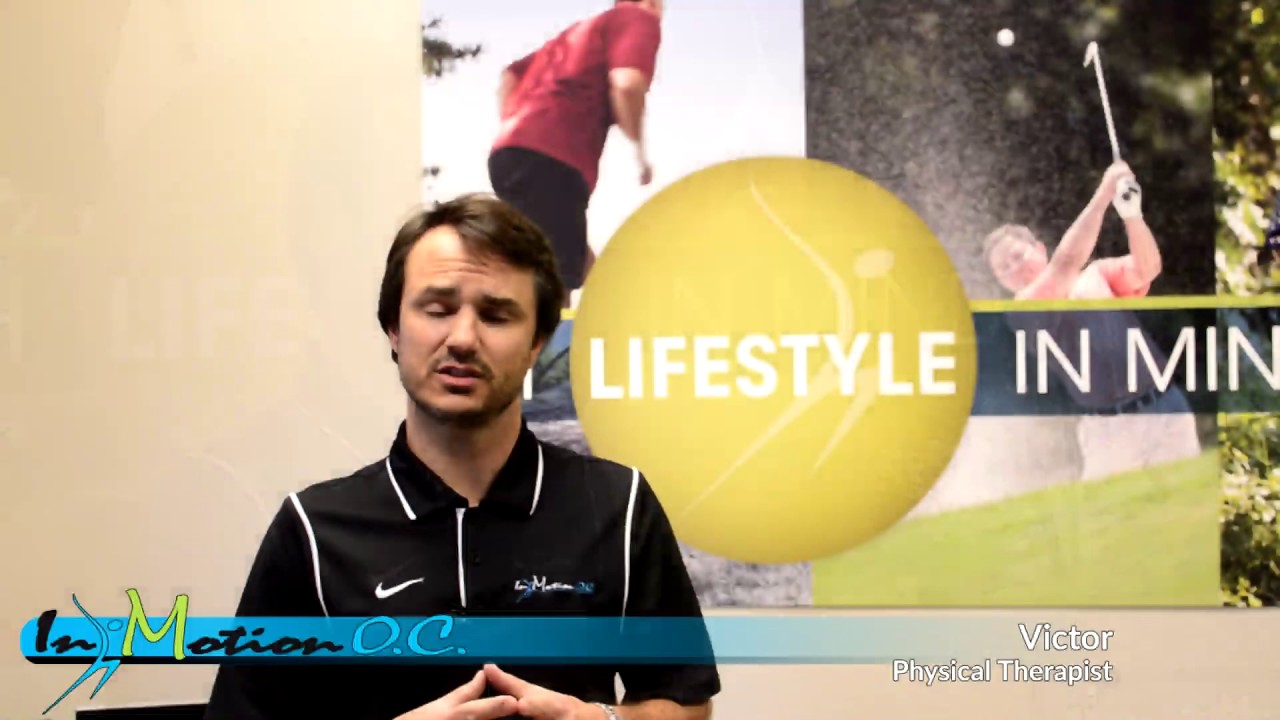Back
Back pain is one of the most common complaints for many of our clients who are referred to us or elect to opt in for physical therapy and personal training at In Motion O.C. Our backs are an intricate web of vertebrae, connected by cushioned vertebral discs, strung through with nerves, and held together by ligaments and muscles. When you think about the amount of focus on the spine, it can get a bit overwhelming but as the spine and the back are a central part of what keeps us moving and healthy, it’s understandable why there would be some pain now and then. At In Motion O.C., we suggest everyone learn more about how to listen to their bodies, which is why we’ve come up with some specifics about the back and pain in this area to share with you. Healthy education and knowing how to use your body to your advantage in everything you do is the key to wellness.
Anatomy of the Back
We start with the base of our back, which includes the vertebrae that act as the casing that protects our spinal cord and is responsible for holding the body erect. Several vertebrae start where the neck ends and trail down to the tailbone – these are the thoracic and lumbar vertebrae. Thoracic vertebrae begin at the topmost part of the back (just at the end of the neck) and end at the lower portion of the back; the lower back consists of the lumbar, which are the strongest and largest portion of our vertebral bones. These vertebrae are stacked on top of one another and have discs encased by fibrous cartilage to offer cushion and mobility, with nuclei full of nucleus pulposus (a watery substance). The purpose of these discs is for shock absorption, providing support as we run, jump, walk and move every moment of the day.

Thoracic Back (Mid/Upper Back)
This section of the back in combination with an abundance of muscles and 12 vertebrae, labeled T1-T12 (top, down), are dedicated to protecting the most vital organs in the trunk of the body: our lungs, heart, liver, kidneys, and stomach. These bones are considered to be fused because they are limited in twisting and bending ability. As there are 12 sets of ribs, there are 12 vertebral bones connected to them, forming a cage. The upper or mid-back is made to protect and support the rib bones.
The most common types of mid back pain are
Disc Degeneration (In Stages)
Herniated disc occurs when the ligament sheath surrounding the disc protrudes outward as the weight of the vertebrae above and below where this disc is located weighs down on it, causing the disc to shorten and shrink. As the ligament sheath breaks down further, degenerative disc disorder (DDD) occurs, and the liquid inside the disc slowly releases into the body, reducing the spongy quality of the disc between thoracic vertebrae. This is a problem because the space created by a fully-formed and pliable disc allows nerve endings to come through small holes in these bones (foramen) and move throughout the body, but end up being compressed by any tearing or bulging in the disc. Pain here can spread from the nerves allocated in this area to the ends of the nerve in the legs, arms or wherever their signaling extends. Movement is reduced by any rotation or adjustments here that can cause the bone to spur and irritate the nerve roots.
Muscular Irritation (Myofascial Pain)
The mid-back is the section that has the strongest muscles or bulk of supportive muscular structures. There are two types of muscle strain, one that happens by weight-bearing and increased physical activity or the wrong type of movement, or the other, which is broad movement after long bouts of inactivity. Inactive muscles can atrophy, so it’s important to exercise them slowly to avoid pain and injury. Muscles that are overstressed can hyperextend and become inflamed, causing pain throughout a group of muscles. Muscle tendons can tear away from supporting bone, and this can cause localized waves of pain that only last for a few days, depending on the severity of muscle strain or sprain.
Arthritis & Osteoporosis
During the aging process, a lifetime of movement and stress to the vertebrae causes increased calcification. As calcification of these joints takes place, it can make it difficult for the vertebrae to move easily. Stiffness in the back occurs since movement is no longer a smooth process. As we age, it’s natural for bones to become thin and brittle along with the joints that support them.
Postural Issues
Maintaining optimal form is difficult when it comes to posture with the amount of sitting we do at work or on our daily commute. However, when we start slouching, the muscles in the back become weak and strained because they’re not being used properly. Everything in the back suffers from poor posture, from the muscles and ligaments to the joints and nerves. As soon as you notice pain in the shoulders below the neck and in the upper back, check to see if you’re hunched over. Adjusting your posture could save you years of unwanted pain.
Rib Conditions
Because the ribs connect to the mid-back, any muscular problems or strain in the ribs is felt in the back. This type of muscular injury is generally felt from the front towards the back. Any strain of these muscles can lead to pain with simple movements, coughing, or heavy breathing.
Lumbar Vertebrae (Lower Back)
The lower back is quite different than the upper back since this region is where focused movement happens. In the upper back or mid-back, the spine isn’t as mobile since it’s meant to protect the organs and provide stability. Lumbar vertebrae are meant to provide flexibility and a strong rotation base. Common injuries here are often work-related since people aren’t aware they need to support the lower back when bending or stretching properly to avoid muscle strain. Within the lumbar region, there are only five vertebral bones that are much wider and are unfused, which gives them more freedom to move. The lower you go, the larger they become. Because these bones are much larger than their thoracic counterparts, their injuries are increasingly more common and lower back pain results.
Disc Bulging, Herniation, and Rupture
Any tearing down of the disc membrane is a danger for rupture and leaking in the spine. Pressure on the nerves and muscles here only increases pain throughout the body. As the discs bulge outward, they shrink and cause additional pressure on the bone edges as well
Lumbar Stenosis
When our nerves are compressed in the upper region there is some irritation that can be reduced over time, but in the lumbar region this pain is stronger and can become a chronic condition that creates a multitude of uncomfortable symptoms. When the nerve is pinched here, the amount of pressure is exuberant since the bones are larger and wider. This causes muscle pain and joint discomfort since the nerves can swell as well. People with lumbar stenosis have little mobility, feel tingling or numbness throughout the lower region of the body and sometimes suffer from shooting pain sensations.
Sciatica
The sciatic nerves run through the pelvic bone and down the leg (on both sides) from the lower back. When there is added pressure on the spine from excess weight (obesity) or prolonged sedentary habits, there is a specific nerve called the sciatic nerve that can become compressed. When the sciatic nerve is irritated or obstructed, pain radiates throughout the leg in a painful pulsing matter all the way down to your toes. Sciatica is debilitating for clients because pain increases with every movement, eventually leading to walkers or canes as support.




Exercise the Pain Away
Here are some therapy based exercises you can try at home to ease your back pain (upper and lower). Our physical therapists show you how to work with these specific points discussed above and teach you how to increase movement without pain.
*This information about physical therapy for back ailments was reviewed by Dr Natalie Thomas, PT, DPT. If you have any questions, please don’t hesitate to contact us here.


